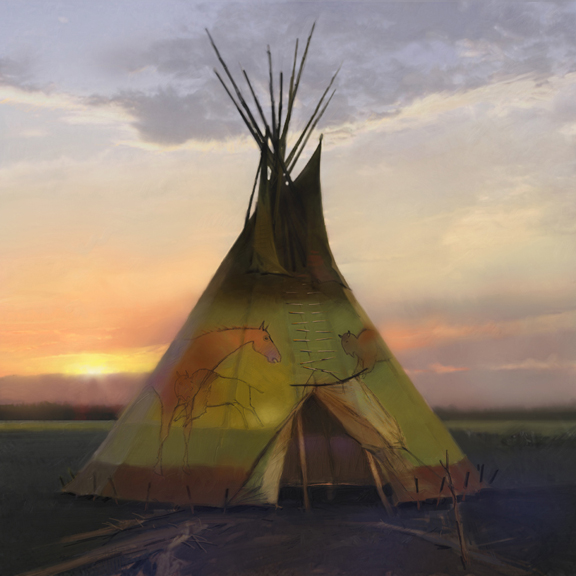Coeur d’Alene
“The study of tipi rings has picked up significantly in the past few years. These circles of stone can be found throughout the West and I have a number of these rings on my ranch in Montana. It is believed that the stones were used to hold the skins that made up the lodge coverings securely on the ground,” explains Tom Gilleon.
“There is a significant difference in the size of these rings, thus the size of the dwellings. This increase of size often coincides with the arrival of the horse in North America. A tribe with tamed mounts not only ranged further and hunted better, they could now move larger and heavier items as well. Early Spanish explorers noted the extent to which the Indians employed dogs as their beasts of burden. Even a large dog could pull only a fraction of what a horse pulled or carried. Therefore, tipi rings are often referred to as dog or horse rings, depending on their size.
“There are two buffalo and a horse adorning the lodge in Coeur d’Alene. The horse is painted over (or imposed over) one of the buffalo to signify the extent to which the horse allowed the Plains People to dominate their hunt of the buffalo. I couldn’t tell you for sure that this type of lodge would have been found in the Coeur D’Alene area or not, but this sunset certainly was. It was a relaxing and gorgeous end to a beautiful day in that area of Idaho. As I watched the sun go down I couldn’t help but think of how the same scene would have appeared when the area was even more tranquil and slightly less developed some 150 years ago."
Tom Gilleon’s contemporary vision of the West weds perfectly representative and abstract art. Most of his compositions are simply a series of vibrant triangles, squares, circles and rectangles. The Native American subject matter provides a narrative accessible to everyone.

